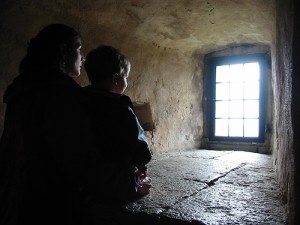 As we begin to plan for survival preparedness, we need to look at the planning process used by Swiss Army knife designers. If the designer had his way, he would include a tool for every possible purpose. You might be similarly inclined. However, this is obviously impossible. You and I (just like the knife designer) must carefully choose what will serve best in the widest variety of situations. Occasionally the designer will build a knife with a more specific use in mind; a Swiss Army knife for use by fishermen is one example. In this case the designer eliminates many needs and can focus on tools tailored for fishing related tasks.
As we begin to plan for survival preparedness, we need to look at the planning process used by Swiss Army knife designers. If the designer had his way, he would include a tool for every possible purpose. You might be similarly inclined. However, this is obviously impossible. You and I (just like the knife designer) must carefully choose what will serve best in the widest variety of situations. Occasionally the designer will build a knife with a more specific use in mind; a Swiss Army knife for use by fishermen is one example. In this case the designer eliminates many needs and can focus on tools tailored for fishing related tasks.
Those of us planning for emergencies are also limited by practical factors and must decide what will give us the most value in a given situation. Some factors and considerations are universal while others will only apply to specific environments.
When planning what items to include in your survival stockpile, you should begin to formulate a pyramid of survival provisions. The bottom of the pyramid will consist of the items that are of the greatest necessity and can deliver the most bang for the buck. Moving up in the pyramid will be more specialized items that aren’t as critical but could be very useful in a given situation. Finally at the pyramid’s top you will place “luxury” items. Luxury in this sense is a relative term and applies to things that we can live without, but that can also go a long way toward making a disaster or other emergency bearable.
The bottom of the pyramid will consist of the three basics: water, food and shelter. The attention you will apply to each will depend on your environment and particular needs. For instance, a person planning to survive on a desert seashore will place a much heavier importance on water than on food and shelter while the survivor located in northern Montana will need to consider shelter very carefully during the winter but should have less trouble with food and water. Remember, just because you live next to a large source of fresh water, you will still need a way to filter or otherwise purify it as well as a way to transport it. These things should also be included in the base of the pyramid.
Many people will also consider self-defense of critical importance. If, after analyzing your situation, you too place defense somewhere in the same category as shelter, then ways to defend yourself must be included at the lowest level in the pyramid.
Moving up the ‘pyramid’ come the more specialized items. Examples could be tools used for construction, traps used for supplementing your food supply and alternative methods of securing water. A good example is medicine. A good stockpile of antibiotics is great to have on hand but isn’t as important as food and water. However, if you have diabetes and require insulin to survive, then you really need to treat your insulin supply like you would water.
The medium level of the pyramid should be added to as one’s time and budget permits. Make sure you have the basics well covered and then begin to build a good secondary survival stash. Most secondary items will store well and will only need to be acquired once. This allows you to continue building over time and eventually you’ll find yourself well prepared.
Once the basics are covered and a good supply of secondary items has been acquired, a few luxury items can be added to your provisions. Examples can be food items that aren’t essential, such as hard candies, or entertainment devices such as games and music. Not everyone will be able to reach the top level in the pyramid. Most people will have their hands full and their budgets stretched just providing for the necessities.
Remember, survival planning requires careful thought and a realistic estimate of your current and future expected situation. Just like the Swiss Army knife can’t have every imaginable resource, neither can we. But a good blade, a can opener and a couple of screw drivers can take us a long way.
 Off The Grid News Better Ideas For Off The Grid Living
Off The Grid News Better Ideas For Off The Grid Living
